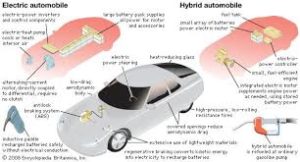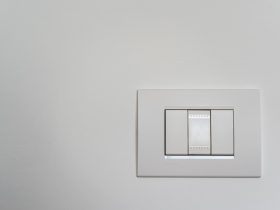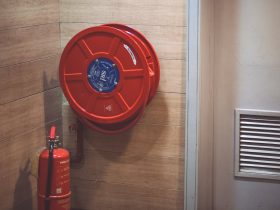
ABSTRACT
Pollution is the major problem in the universe, air pollution being one of the
predominant among them. Air pollution is mainly caused due to the exhaust gases
coming out of the vehicles and Industries. This is caused mainly due to burning of fuel
and gases emanating from chimneys. In an effort to control this pollution, a
combination of bio-degradable materials have been selected to absorb major
pollutants namely Carbon Dioxide (CO2), Carbon Monoxide (CO), Sulphur Dioxide
(SO2) and Hydro Carbons (HC) from automobile vehicles.
Experimental work has been carried out on a four stroke petrol engine with the
help of exhaust gas analyser. The readings are tabulated and plotted. It is observed
that the absorbers are absorbing the gases effectively during the period of
investigation.
Key words: Automobile exhausts, Absorbers, Gas Analyser
1. INTRODUCTION
Air pollution is caused by poisonous gases, sulphur dioxide, nitrogen dioxide, carbon
monoxide and very small particulates. It is also caused by the smoke and harmful gases
released by the fires and factories. Use of coal, wood and kerosene as fuels for fire also causes
air pollution. Air pollution may cause breathing problems such as asthma or other health
hazards. It also causes diseases like cancer. Table – 1 gives different types of pollution and
their damage.
2. AUTOMOBILE POLLUTANTS AND THEIR ABSORBERS
Particulate Matter (PM). These particles of soot and metals give smog its murky colour.
Fine particles less than one-tenth the diameter of a human hair pose the most serious threat to
human health, as they can penetrate deep into lungs. PM is a direct (primary) pollution. Diesel
exhaust is a major contributor to PM pollution.
Hydrocarbons (HC). These pollutants react with nitrogen oxides in the presence of sunlight
to form ground level ozone, a primary ingredient in smog. Though beneficial in the upper
atmosphere, at the ground level this gas irritates the respiratory system, causing coughing,
choking, and reduced lung capacity.
Nitrogen oxides (NOx). These pollutants cause lung irritation and weaken the body’s
defences against respiratory infections such as pneumonia and influenza. In addition, they
assist in the formation of ground level ozone and particulate matter.
Carbon monoxide (CO). This odourless, colourless, and poisonous gas is formed by the
combustion of fossil fuels such as gasoline and is emitted primarily from cars and trucks.
When inhaled, CO blocks oxygen from the brain, heart, and other vital organs. Foetuses, newborn
children, and people with chronic illnesses are especially susceptible to the effects of
CO.
Sulphur dioxide (SO2). Power plants and motor vehicles create this pollutant by burning
sulphur-containing fuels, especially diesel. Sulphur dioxide can react in the atmosphere to
form fine particles and poses the largest health risk to young children and asthmatics.
Hazardous air pollutants (toxics). These chemical compounds have been linked to birth
defects, cancer, and other serious illnesses. The Environmental Protection Agency estimates
that the air toxics emitted from cars and trucks which include Benzene, acetaldehyde, and 1,
3-butadiene account for half of all cancers caused by air pollution.
Greenhouse gases. Motor vehicles also emit pollutants, such as carbon dioxide, that
contribute to global climate change. In fact, cars and trucks account for over one-fifth of
global warming pollution. Transportation, which includes freight, trains, and airplanes,
accounts for around thirty percent of all heat-trapping gas emissions.
Much of the vehicular air pollution can be avoided by maintaining proper speed of the
vehicles. Vehicles stranding on the road crossing or in traffic jams cause more pollution. The
quantity of harmful emissions decreases with increasing speed as given in Table 2
3. FABRICATION AND TESTING OF PROTOTYPE
For most common hazardous pollutants, absorbing materials which bio-degradable are
selected
4.COST ANALYSIS
The cost analysis has been presented for exposed area of exhaust gas absorbers of size 190 x
150 x 12 mm3. Each plank of absorber costs ₹ 117 /- for carbon monoxide and ₹ 27 /- for
sulphur oxides, carbon di-oxide and hydrocarbons.
Total cost of the absorbers is ₹ 144 /- (Excluding the cost of wood) for the selected size of
2 planks. The cost is in direct relation to the size of absorber planks that can be arranged in
the real environment.
5. CONCLUSIONS
In this project an attempt has been made to fabricate and investigate experimentally, an
exhaust gas absorbing device. The absorbers selected based on the exhaust gases are
commercially available and also economical for easy replacement over a definite period of
time interval. The set-up fabricated is found to be effective to absorb exhaust gases during the
period of investigation.
Leave a Reply Cancel reply
Categories
- Animal27
- Apps3
- Art70
- Auto50
- Business175
- Career1
- Education114
- Faith62
- Family186
- Fashion35
- Food67
- Gadgets16
- Gaming13
- Health139
- Hobby134
- Holidays26
- Home96
- Legal11
- Marketing40
- Money96
- News30
- News130
- Other Stories4
- Pet1
- Photography14
- Poem23
- Science28
- SkyPip3
- Social Network75
- Society159
- Software23
- Technology125
- Travel69







Leave a Reply